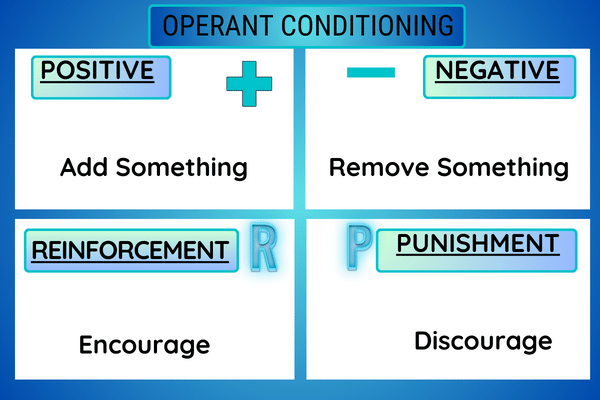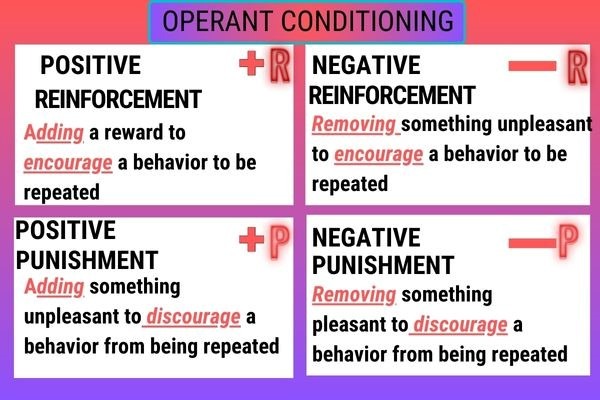
In this article, we explore the role of positive reinforcement in service dog training.
By understanding this training approach, you can:
- * Foster a strong bond
- * Enhance learning
- * Empower your service dog to excel
- * Both have fun and enjoy training
Definition and Concept:
Positive reinforcement rewards behaviors you like, to increase the likelihood it will be repeated.
It focuses on reinforcing behaviors using rewards, usually treats, praise and/or toys. Keep in mind that reinforcement can come from the environment as well.
For example, a dog jumps up on the counter for the first time and helps himself to the Easter ham as it waits for the oven to preheat. The dog was scolded, spanked and grounded to the backyard all day.
What do you think happened next?
The dog continued to check for food left on the counter, and then the table. Before long he would steal food off your plate if you weren’t paying attention.
So, if he was punished, why did the behavior get worse?
When the dog first rewarded himself with the ham from the counter, it did not matter how severe the punishment was that followed because devouring the ham was so rewarding.
Each time a dog is able to self-reward, especially with something it views as high-value, the behavior will only get stronger because it was reinforced.
Why do dogs chase squirrels?
Well, squirrels run and this kicks in any dog’s prey drive. They cannot help but chase something that runs. Plus it is an awful lot of fun.
If your dog is running the other way in hot pursuit of some critter and you call their name to come to you, do they stop on a dime, turn around, and come right back to you so you can clip the leash back on and go home?
Heck no!
What if you had a piece of dry kibble? Unlikely.
Hot dogs?
How about filet mignon? Maybe.
Whatever is most rewarding to the dog is what s/he will choose. In the case of the squirrel, if you do not have a solid recall that you trained carefully BEFORE removing the leash, I would bet 99.9% of the time the environment’s reward will win.
Benefits of Positive Reinforcement:
- * Creates an enjoyable training environment.
- * Strengthens the human-canine bond.
- * Promotes learning.
- * Encourages engagement.
- * Boosts confidence (both human and dog).
- * Nurtures a cooperative and willing attitude (this is especially essential with service dogs)
In other words, it makes training fun for dogs and handlers alike. Dogs want to train.
Science Behind Positive Reinforcement:
Positive reinforcement is one of the four principles behind operant conditioning, in which behaviors that result in pleasurable consequences are more likely to occur in the future. By associating desired behaviors with rewards, service dogs learn to offer those behaviors willingly and consistently.

Practical Applications of Positive Reinforcement in Service Dog Training
Traditional training
Positive reinforcement has replaced most “traditional” training, which until the 1980’s was the only way trainers knew to train dogs.
It favored chain collars made of metal, some with spikes that turned inward to dig into a dog’s neck. The theory is based on punishing a behavior one didn’t like in hopes the dog would stop the behavior if the punishment was severe enough.
Now this worked at the time, to an extent, but there are some problems with this model.
The first issue is the use of positive punishment, which is an action you perform after or during an event (whatever the dog is doing) that is intended to discourage that event (behavior) from happening again.
This could be anything from yelling at the dog, “popping” the leash, throwing a shoe at your dog, spanking them, rubbing their nose in poop, and the list of absurd abusive things trainers did and told owners to do goes on.
So first, this scares the sh%$ out of the dog and breaks trust rather than nurturing a bond. The dog complies in your presence because it is afraid not to, not necessarily because it loves and respects you.
Since you haven’t shown the dog what you would rather s/he do, your training is left with holes.
Another issue is that to be effective, any punishment or reinforcement (positive or negative) must occur immediately, in less than 2 seconds. Any consequence (positive or negative) that occurs later than 1 to 2 seconds is not connected with the action you are trying to correct. Instead, it will be connected with whatever the dog was doing right at that second, which often corrects a behavior you DO want and confuses the poor dog to no end.
The other imperative factor is that any undesirable behavior must be addressed every single time if you hope to correct it. This means that if your dog can self-reward without you being present to punish the behavior, the behavior would be strengthened due to being positively reinforced by the environment.
In service dog training, this model produces unreliable results at best.
If a dog has been punished for making a mistake, it develops anxiety about making a mistake and will avoid it when possible.
If your dog has been corrected using some form of positive punishment, say a static correction from an electronic collar for breaking a “stay” this dog will be less likely to break a stay, even in a medical emergency when the handler needs the dog to take the initiative on its own to go find help.
Instead, the dog feels ambiguous and uncertain-
Does it stay as it was told to do, or is the dog confident enough to use intelligent disobedience to perform the potentially lifesaving task its owner needs it to do? A dog trained using positive reinforcement would likely make the right choice because, unlike the other dog, this dog has been taught what it IS supposed to do.
Which dog would you rather rely on in an emergency?
By rewarding desired responses from puppyhood through public access and task training, service dogs develop a solid understanding of cues and learn to perform them reliably.
In situations where undesired behaviors arise, positive reinforcement can be used to redirect and shape alternative behaviors. By rewarding desired behaviors while ignoring or redirecting unwanted behaviors, service dogs learn to make better choices.
This is such an important topic, yet I rarely see it addressed.
Positive does not mean “good” in dog training
Unless you are a dog trainer or behaviorist, you might not realize that the terms “Positive” and Negative” in dog psychology are misleading.
Positive does not translate to “good” when you are training a dog. On the same token, negative in dog training lingo does not mean “bad”.
Wait what?
The word positive in “positive reinforcement” simply means adding something to the equation and that could be good or bad. That is why the word “positive” is also used to describe punishment in dog training and there is nothing nice about that.
In the graphic below is a chart to help describe operant conditioning. You see two boxes that say reinforcement and 2 that say punishment. The word positive above one side of the page and negative above the other side. A quick definition is in the boxes under the main word.


Tips for Effective Positive Reinforcement Training
Timing and Consistency:
Deliver rewards within 1-2 seconds to ensure associations between behavior and reward. Consistency in the application of positive reinforcement helps dogs understand expectations and reinforces desired behaviors consistently.
Varied Rewards:
Utilize a variety of rewards, including treats, praise, toys, or play, to keep training engaging and exciting for service dogs. Determine what most motivates your dog and tailor the rewards accordingly.
Incremental Progression:
Break down tasks or behaviors into small, achievable steps to simplify learning and build confidence. Gradually increase difficulty as your service dog becomes more proficient in each behavior.
Environment:
Create a pleasant training environment that fosters trust, joy, and enthusiasm. Incorporate play, enthusiasm, and praise to make the training experience enjoyable for you and your service dog.
Positive reinforcement and positive punishment are two of the elements that make up operant conditioning. Contrary to popular belief, the word “Positive” does not mean good in the context of operant conditioning. Positive reinforcement, however, does form the foundation of effective service dog training, nurturing a strong bond, trust, and cooperation between you and your loyal companion. By employing this humane and scientifically-backed training approach, you create the most rewarding training environment.